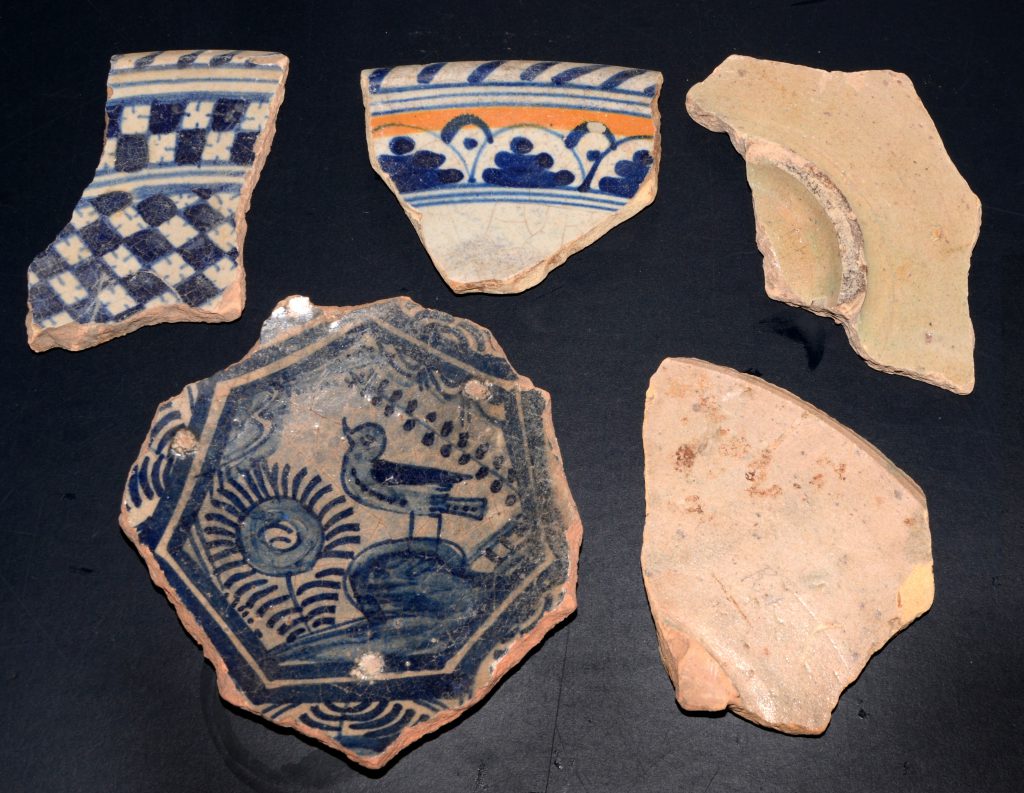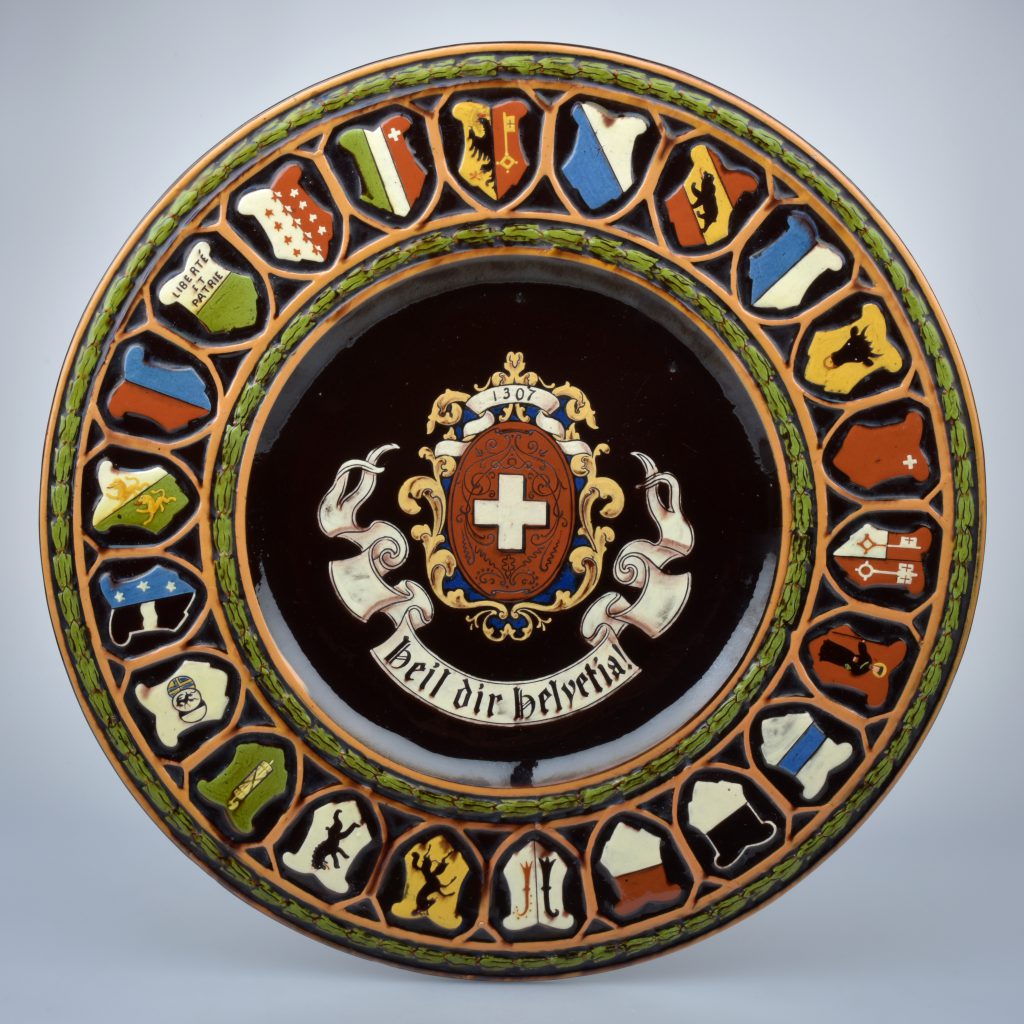
Much like faience, majolica is a type of earthenware with an opaque lead-tin glaze. In the Netherlands and in Germany this represents an earlier period of production, with the outside or front bearing an opaque faience glaze (often with in-glaze painted decoration) and just a lead glaze on the inside or back. In order for the term “faience” to be used, both sides of the vessel should be covered in a faience glaze; this was the case from about the mid-17th century onwards. Majolica, on the other hand, was decorated with in-glaze painting and was always fired twice (biscuit and glost firing).
However, in the second half of the 19th century, some factories, for example in Aedermannsdorf or Steffisburg near Thun, produced wares that are now also referred to as “majolica”, even though they were in fact earthenware vessels with multicoloured glaze and often with historicising Renaissance motifs.

Known as “Thun majolica”, it was in fact earthenware with polychrome painting and glazing. The term was also erroneously used to denote some wares produced in the late 19th century by numerous larger pottery manufactories in Germany, England and France (http://majolicasociety.com/; Decker 2000; Forest/Lacquemant 2000; Reilly 1995, 269). There too, the so-called majolica did not bear a lead-tin glaze.
Translation Sandy Haemmerle
German: Majolika
French: Majolique
References:
Bartels 1999
Michiel Bartels, Steden in Scherven, Zwolle 1999, 201-236
Blondel 2001
Nicole Blondel, Céramique: vocabulaire technique, Paris 2001, 72-74.
Decker 2000
Émile Decker, Majolique et faïence artistiques à a fin du XIXe siècle, in: Dominique Forest/Karine Lacquemant, Massier – l’introduction de la céramique artistique sur la Côte d’Azur : 7 mai – 27 septembre 2000, Musée Magnelli, musée de la céramique, Vallauris, Paris 2000, 35-43.
Forest/Lacquemant 2000
Dominique Forest/Karine Lacquemant, Massier – l’introduction de la céramique artistique sur la Côte d’Azur : 7 mai – 27 septembre 2000, Musée Magnelli, musée de la céramique, Vallauris, Paris 2000.
Heege 2016
Andreas Heege, Die Ausgrabungen auf dem Kirchhügel von Bendern, Gemeinde Gamprin, Fürstentum Liechtenstein. Bd. 2: Geschirrkeramik 12. bis 20. Jahrhundert, Vaduz 2016, 271-288.
Karmason/Stacke 2002
Marilyn G. Karmason/Joan Stacke, Majolica : a complete history and illustrated survey / by Marilyn G. Karmason with Joan B. Stacke, New York 2002.

